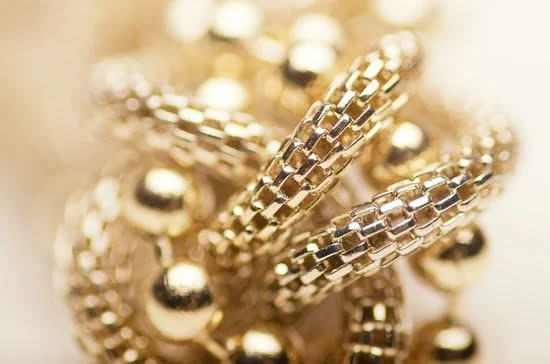Fine jewelry has long been a symbol of luxurious taste and timeless elegance. Whether it’s a dazzling diamond ring, a lustrous pearl necklace, or a shimmering gold bracelet, fine jewelry holds an undeniable allure for those who appreciate the finer things in life. However, not all that glitters is necessarily gold – or authentic.
In the world of fine jewelry, the presence of a stamp can often be seen as a mark of authenticity and quality. This article will explore the important question: Does fine jewelry always have a stamp?
The presence of a stamp on fine jewelry serves as both a mark of its authenticity and provides valuable information about its composition and origin. This small imprint can hold significant meaning for both buyers and sellers alike. In this section, we will delve into the role that stamps play in the world of fine jewelry, their legal requirements, and explore the various types of stamps found on these exquisite pieces.
Understanding the significance behind these tiny imprints is essential for anyone looking to purchase fine jewelry. Additionally, knowing how to identify genuine fine jewelry without a stamp is crucial in navigating this sophisticated market. As we explore these aspects throughout this article, readers will gain insight into the implications of purchasing unstamped fine jewelry and learn valuable tips for ensuring the authenticity of their treasured pieces.
So, does fine jewelry always have a stamp? Let’s unravel this captivating mystery together.
Importance of Stamps on Fine Jewelry
Fine jewelry is often considered a significant investment due to its high quality and value. One of the key indicators of the authenticity and value of fine jewelry is the presence of a stamp.
A stamp on fine jewelry typically indicates important details such as the metal purity, the manufacturer’s trademark, and sometimes even the country of origin. This section will delve into the importance of stamps on fine jewelry and how they serve as a crucial guide for both buyers and sellers.
The presence of a stamp on fine jewelry signifies that it has met certain standards of quality and composition. For example, a “14K” or “18K” stamp on gold jewelry indicates the purity of the gold used in making the piece. Similarly, a stamp indicating “925” on silver jewelry means that it is made from sterling silver, which is 92.5% pure silver. These stamps assure buyers that they are getting what they pay for in terms of quality.
Moreover, stamps on fine jewelry also serve as a form of consumer protection. They provide essential information about the manufacturer or designer, which can be helpful in case there are issues with the piece in the future. Additionally, when fine jewelry carries legally required stamps, it gives consumers confidence that they are purchasing genuine products from reputable sources.
Finally, for those who may be interested in selling their fine jewelry in the future, having legitimate stamps can significantly increase its resale value. Authentic stamps can reassure potential buyers about the quality and authenticity of the piece, leading to better marketability and potentially higher selling prices.
| Importance of Stamps | Key Points |
|---|---|
| Quality Assurance | Stamps indicate metal purity and other important details. |
| Consumer Protection | Stamps provide information about manufacturers and designers. |
| Increased Resale Value | Legitimate stamps can lead to better marketability and potentially higher selling prices. |
Legal Requirements for Stamps on Fine Jewelry
Fine jewelry is a valuable and coveted item, often passed down through generations or purchased as an investment. One important aspect of fine jewelry is the presence of stamps, which serve as a mark of its authenticity and quality. Stamps on fine jewelry are not only a sign of the metal’s purity but also carry legal significance.
In the United States, the Federal Trade Commission (FTC) has specific legal requirements for stamping fine jewelry. These requirements are in place to protect consumers from fraudulent or misleading practices in the jewelry industry. According to FTC guidelines, any piece of jewelry that is advertised or sold as gold, silver, platinum, or any other precious metal must be stamped with a hallmark indicating its purity and authenticity.
The legal requirements for stamps on fine jewelry vary depending on the type of metal used. For example:
- Gold Jewelry: In the United States, gold jewelry must be stamped with a hallmark indicating its purity. Common gold purity marks include 24K (indicating 24 karat gold), 18K, 14K, and so on.
- Silver Jewelry: Sterling silver, which consists of 92.5% pure silver, is typically stamped with the numbers “925.” This mark indicates that the piece meets the standard for sterling silver.
- Platinum Jewelry: Platinum jewelry must be stamped with a mark indicating its level of purity; common marks include “950” for pieces that are 95% pure platinum.
It is important to note that failure to stamp fine jewelry according to these legal requirements can result in severe penalties for jewelers and sellers. Additionally, unstamped fine jewelry may raise questions about its authenticity and quality, which can have significant implications for both buyers and sellers in the long run.
Ultimately, understanding the legal requirements for stamps on fine jewelry is crucial for both consumers and industry professionals. By familiarizing themselves with these regulations, individuals can make informed decisions when purchasing or selling fine jewelry while ensuring compliance with federal laws.
Types of Stamps Found on Fine Jewelry
When it comes to fine jewelry, the presence of a stamp can provide valuable information about the piece. The stamp on fine jewelry serves as a mark of authenticity and quality, giving the buyer confidence in their purchase. However, not all stamps are created equal, and there are several types of stamps that may be found on fine jewelry.
One of the most common types of stamps found on fine jewelry is the purity mark. This stamp indicates the level of purity of the metal used in the piece. For example, a stamp of “18K” indicates that the piece is made with 18 karat gold, while a stamp of “925” signifies sterling silver. Additionally, some stamps may also include the manufacturer’s mark or logo, providing further assurance of the jewelry’s origin.
Another type of stamp frequently found on fine jewelry is the hallmark, which often includes information such as the metal type, country of origin, and year of manufacture. This stamp adds an extra layer of credibility to the piece and can help buyers make informed choices about their purchases.
In addition to purity marks and hallmarks, some fine jewelry may also feature a quality mark indicating that it has been inspected by an independent assayer for quality control. These stamps serve as a guarantee that the piece meets certain standards and specifications, giving buyers peace of mind about their investment.
Whether you are buying or selling fine jewelry, understanding the types of stamps found on these pieces can help you make more informed decisions about their authenticity and value. While stamps on fine jewelry are generally reliable indicators of quality, it’s important to note that not all authentic pieces may have a visible stamp due to wear or sizing alterations over time.
It is crucial to consider other factors such as craftsmanship and reputable sellers when evaluating fine jewelry without a visible stamp.
Reasons Why Fine Jewelry May Not Have a Stamp
When it comes to fine jewelry, the presence of a stamp is often seen as a mark of quality and authenticity. However, there are several reasons why fine jewelry may not have a stamp. Understanding these reasons can help consumers make informed decisions when purchasing jewelry.
Vintage or Antique Jewelry
One reason why fine jewelry may not have a stamp is if it is vintage or antique. Older pieces of jewelry may predate current regulations requiring stamps, or the stamps may have worn away over time. In some cases, the original stamps may have been removed during repairs or alterations, making it difficult to determine the authenticity of the piece based on stamps alone.
Custom-Made Jewelry
Fine jewelry that has been custom-made or handmade by independent craftsmen may not always have a stamp. While many jewelers will include their signature or hallmark on their pieces, this is not always the case. Additionally, some customers may request that stamps are not included for aesthetic reasons.
International Standards
In some cases, fine jewelry that is imported from other countries may not have a stamp that complies with the standards of the country in which it is being sold. This can lead to confusion for consumers who expect to see a specific type of stamp on all authentic fine jewelry.
Understanding these reasons why fine jewelry may not have a stamp can help consumers navigate the world of luxury jewelry with confidence and ensure they are making informed purchases.
How to Identify Fine Jewelry Without a Stamp
Understanding Unstamped Fine Jewelry
Unstamped fine jewelry refers to pieces that do not have the typical markings or stamps that indicate their metal content or quality. While stamped jewelry is considered the norm, there are instances where high-quality fine jewelry may not have any visible stamp. This can lead to confusion and uncertainty for consumers who are trying to assess the value and authenticity of the piece.
Visual Inspection
One way to identify fine jewelry without a stamp is through visual inspection. Some high-end jewelry designers prefer not to clutter their creations with visible stamps, opting instead for hidden or less conspicuous markings. This allows the focus to remain on the design and craftsmanship of the piece. However, it’s important to note that some unstamped pieces may be of lesser quality or even counterfeit, so thorough examination by a professional is crucial.
Testing the Metal
Another method for identifying fine jewelry without a stamp is through metal testing. A certified jeweler can use various methods such as acid testing or electronic testing to determine the metal content of an unstamped piece.
This involves taking a small sample from an inconspicuous area of the jewelry and subjecting it to different chemical solutions or electronic currents to gauge its purity and composition. While this method requires specialized equipment and expertise, it can provide valuable information about the authenticity of unstamped fine jewelry.
By understanding how to identify fine jewelry without a stamp, consumers can make more informed decisions when purchasing high-end pieces. While stamps serve as useful indicators of quality and authenticity, their absence does not necessarily mean that a piece is inferior or fake. However, it does call for additional scrutiny and verification before making a purchase.
Implications of Purchasing Unstamped Fine Jewelry
When it comes to purchasing fine jewelry, the presence of a stamp can have significant implications for the buyer. For many consumers, a stamp on fine jewelry serves as a form of validation for the authenticity and quality of the piece. However, not all fine jewelry is required to have a stamp, which raises questions about the implications of purchasing unstamped fine jewelry.
One implication of purchasing unstamped fine jewelry is the potential risk of unknowingly buying counterfeit or low-quality pieces. Without a stamp to indicate the metal purity or authenticity, buyers may find themselves in possession of jewelry that does not meet their expectations in terms of value and quality. This can be particularly concerning for those who are investing in high-value items or looking for pieces with sentimental significance.
Furthermore, purchasing unstamped fine jewelry may also raise doubts about the origin and legality of the item. In some cases, unstamped jewelry could be a result of illegal practices such as smuggling or unauthorized production. This poses ethical and legal concerns for both the consumer and the seller, as it could lead to complications related to ownership and provenance.
Additionally, without a stamp to verify its characteristics, unstamped fine jewelry may face challenges when it comes to appraisal, resale value, and insurance coverage. The absence of a stamp could make it more difficult for owners to establish the true worth and provenance of their pieces, leading to potential financial losses in the future.
Tips for Ensuring the Authenticity of Stamped Fine Jewelry
When purchasing fine jewelry, it’s important to ensure that the piece is authentic and of high quality. One way to do this is by looking for a stamp on the jewelry. However, just because a piece of fine jewelry does have a stamp does not always mean it is authentic. There are ways to ensure the authenticity of stamped fine jewelry.
One tip for ensuring the authenticity of stamped fine jewelry is to look for additional markings on the piece. In addition to the standard purity mark, fine jewelry may also have a maker’s mark or hallmark. These additional markings can provide valuable information about the origin and authenticity of the piece.
Another tip is to familiarize yourself with common stamps and markings used in fine jewelry. By understanding the different types of stamps, such as purity marks and trademarks, you can better evaluate the authenticity of a piece. Researching and educating yourself on these stamps can help you make more informed decisions when purchasing fine jewelry.
Lastly, it’s important to only purchase fine jewelry from reputable dealers and retailers. By buying from trusted sources, you can have more confidence in the authenticity of the stamped jewelry you are purchasing. Reputable dealers are more likely to accurately represent their products and provide documentation to support the authenticity of their fine jewelry.
Conclusion and Final Thoughts on the Role of Stamps in Fine Jewelry
In conclusion, the presence of a stamp on fine jewelry can be a crucial factor in determining its authenticity and quality. While there are legal requirements for stamps on fine jewelry, it is important to note that not all fine jewelry will always have a stamp. This is due to various reasons such as the size of the piece, the type of jewelry, or the preferences of the manufacturer.
Despite the importance of stamps, it is possible to identify fine jewelry without a stamp through other means such as visual inspection, reputable sellers, and professional appraisals. However, purchasing unstamped fine jewelry can have implications in terms of resale value, insurance coverage, and potential difficulties in verifying its authenticity in the future.
To ensure the authenticity of stamped fine jewelry, it is important for consumers to educate themselves about different types of stamps found on fine jewelry and to purchase from reputable sellers. Additionally, obtaining certifications and appraisals can provide further assurance about the quality and value of the piece.
In essence, while stamps play a significant role in identifying authentic and high-quality fine jewelry, their absence should not necessarily deter purchasers. By understanding the legal requirements for stamps, how to identify unstamped fine jewelry, and taking necessary precautions when buying stamped pieces, consumers can make informed decisions when investing in fine jewelry.
Frequently Asked Questions
Is All Fine Jewelry Stamped?
Not all fine jewelry is stamped. While most fine jewelry, especially pieces made with gold or silver, will have a stamp indicating the purity of the metal, there are some exceptions. Some vintage or custom-made pieces may not have a stamp, and in those cases, it’s best to have the piece evaluated by a professional jeweler.
How Can You Tell if Jewelry Is Fine?
There are several ways to tell if jewelry is considered “fine.” One way is to look for a stamp indicating the purity of the metal used, such as “14K” for 14 karat gold or “925” for sterling silver.
Another way is to inspect the overall craftsmanship and quality of the piece – fine jewelry tends to be well-made with attention to detail and often includes real gemstones rather than imitations.
What Does It Mean if a Ring Is Not Stamped?
If a ring is not stamped, it doesn’t automatically mean that it’s not fine jewelry. As mentioned before, some antique or custom-made pieces may not have stamps.
However, it does make it more difficult to determine the purity of the metal used and whether it meets certain standards. In these cases, it’s best to consult with a jeweler who can evaluate the piece for you.

Welcome to my jewelry blog! My name is Sarah and I am the owner of this blog.
I love making jewelry and sharing my creations with others.
So whether you’re someone who loves wearing jewelry yourself or simply enjoys learning about it, be sure to check out my blog for insightful posts on everything related to this exciting topic!





